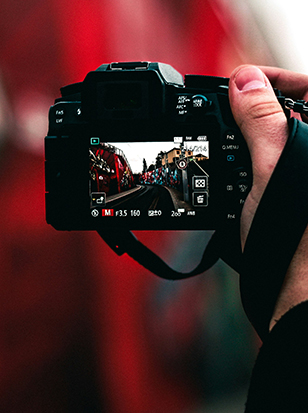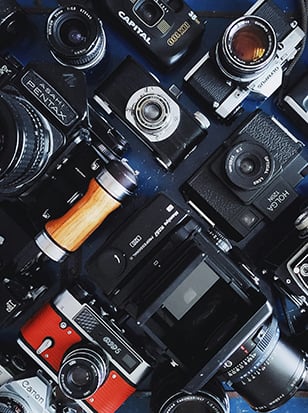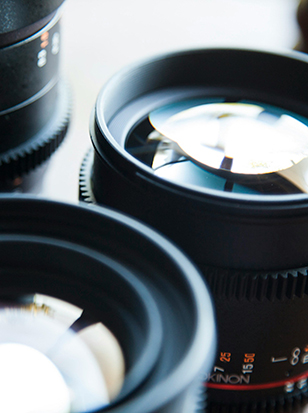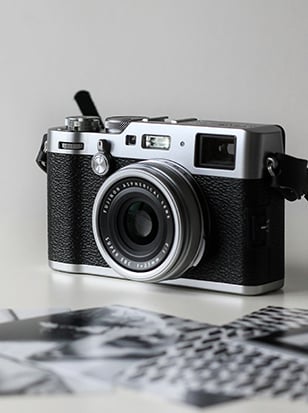
Early this year, court documents revealed that the work of thousands of photographers and other artists had been used to train the AI image generator Midjourney.
Filed as part of a class-action suit in the USA against Midjourney’s developer, Stable Diffusion, the documents revealed a list of some 16,000 artists, including many photographers both living and dead, whose style the machine’s makers allegedly wanted it to be able to copy.
One name on the list was Tim Flach. An established British photographer specialising in images of animals, Tim has taken a keen interest in the development of generative AI, discovering that he could very easily recreate his own images with AI. He therefore seemed like the ideal person to speak to in order to try and make sense of this current moment – where generative AI is now in its relationship to photography, and where it might go in the future.
Tim’s primary concern about AI isn’t the misuse of his own imagery. As he made clear very early in our conversation, the implications are larger than the work of any one photographer. “The boundaries between photorealism and these deepfakes, synthetic versus reality. When those boundaries start to dissolve, I think we have the greatest sociological issues,” he said.
Looking at the current news landscape, it’s hard to disagree with his assessment. When I went to PetaPixel to get the link to the original article about the Midjourney list, two of the top trending stories were “Trump Claims Unflattering Image of Him Playing Golf Was AI-Generated” and “Disturbing AI Images of Children Found for Sale on Shutterstock”. And, of course, still going strong was: “Families Scammed by AI Images That Promised Willy Wonka-Style Event” (a story that broke after Tim and I spoke).
Clearly, there are conversations that need to happen – and getting Tim’s perspective on the whole situation seemed a good place to start. Here is our conversation, which has been edited for length and clarity.
Jon Stapley: How did you first become aware that Midjourney and these other tools were using your images? I recall that when you found out you were on the list of 16,000 artists whose data had been used, you weren’t exactly surprised?
Tim Flach: I wasn’t surprised at that point, because I knew you could ask it to do something in my style and it’d do a remarkably good job. I was actually called up by a researcher doing her MA at Camberwell – part of a department looking at AI – and she said, “I’d like to interview you because you are one of the most ‘scraped’ artists out there.”
I was also aware of the AI debate, because I had been – as President of the Association of Photography – at Westminster during the time that the text and data mining exemption [from copyright law] was trying to be put through in June or July last year. So I had been up to speed with those questions, and the government’s interest in trying to give rights to commercial imagery for these scrapes.
JS: It must have been quite a surreal experience at first – asking one of these tools, “Can you generate a Tim Flach image?” and then seeing it come back.
TF: Well, I think it’s hard to be a photographer and not be a little excited about technology. We all know the tools are part of our medium. I’m of the generation where I started using plate cameras for my architectural work – developing the film, processing the E6 and all that – and then went to digital.
One of the ladies in this court case in America [the Stable Diffusion Litigation], Karla Ortiz, who’s an illustrator working on films, she said what I was just saying – that we’re really excited and curious, we’re thinking, “Wow, these are amazing tools – but what are the implications? What does this mean going forward?” So it’s not that we’re all thinking our futures are over – I think there are deeper questions. What does this mean for society? How will we know what’s real?
JS: That chimes with my experience – I spoke with a documentary photographer friend recently about AI, and remember feeling surprised at how relaxed and even curious he was about it. But the way you’ve expressed that makes it make more sense. It’s a new tool; it’s exciting!
TF: Looking at this class-action lawsuit in the States – the guys there are saying that if you look at people working in Hollywood, they’re already too nervous to touch this. AI is particularly fast in its development; Moore’s Law is, what, 18 to 20 months, but there’s been a lot of AI research that suggests it’s doubling [in power/capacity] every six months.
Legislation, and law in turn, usually catches up to deal with new technologies. The people in the industry are too nervous to use AI, even if it’s good enough. They are using it to work concepts out – and I personally have had advertising concepts sent to me that looked pretty good, and were actually AI generated. But I think that it’ll be illegal, down the road, to use these images. Maybe not today – you can get away with using it now – but down the road you potentially could have a lawsuit. And when you have something polluted and contaminated with copyrighted images, it’s a minefield at that point.
But the issue – the one that’s far more important – is that we didn’t invite data-scraping of our images. And with things like Stability and Midjourney, the subscription that’s needed to access [the generative software] is a commercialisation of a supposedly non-profit-making project.
There’s an “opt-out” option [for artists], which I think is a weak answer. You can only opt out when you find out! And artists are often not the most technically inclined – it’s easy for the tech industry guys to say there’s an opt-out. No – it has to be an opt-in. That seems a perfectly reasonable case.
JS: And there probably would be artists and photographers who’d be happy to opt in. The way there are people who put their images on free download sites like Unsplash, or release them to the public domain or on a Creative Commons licence.
TF: What I’d say is that AI should support human creativity, not supplant human creative endeavour. I would argue that there is an existentialist question there – a more subtle one – which is the relationship of creative endeavour to the wellbeing of society. The survival of society depends on what things are, and that we can predict what we need to in order to survive. That may sound a very abstract concept – it goes back to cognitive philosophers like Andy Clark, about how we depend in a sense predominantly on prediction and anticipation.
That, I think, is the critical societal point – those boundaries disappearing between a photorealistic impression that is a deepfake or synthetic, versus what’s real. That’s the crux of it, for me.
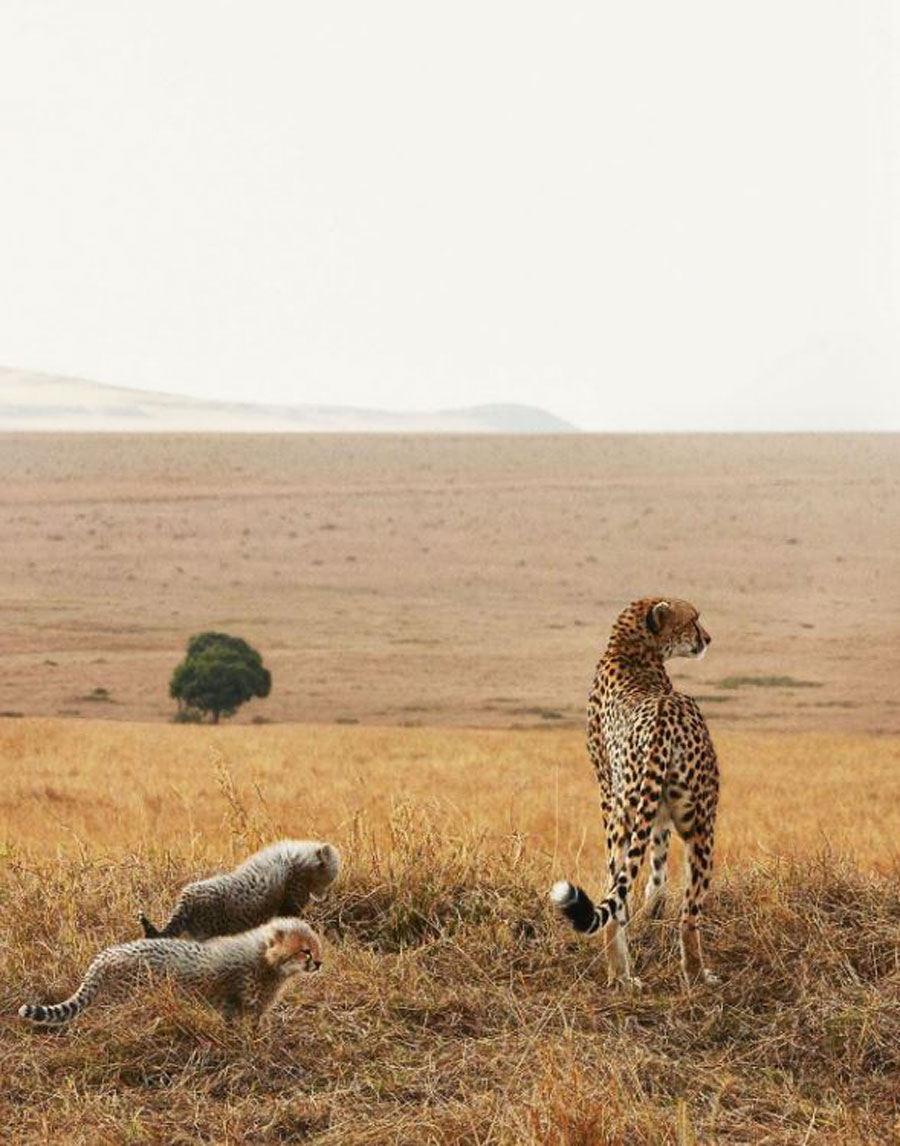
JS: Photography has been sort of the lynchpin of our shared reality for some time. Through especially the press photography of the 20th Century, there’s been the sense that once we see something, it’s verified. And AI severs that link, in a way.
TF: Well, I suppose that has been under question from the very beginning. From the start, photography has tried to emulate art, and there have also been many instances where photographs were “managed” for political purposes. Trotsky, for example, was retouched out of the important pictures with Lenin and the others, of the revolutionaries coming together.
We’ve long been using assistive tools in Photoshop, healing tools and others. But what we’re witnessing now is a pervasiveness of these tools, and with the advent of ChatGPT and other generative tools, they’ve become much more present in most people’s imaginations. So we’re witnessing a change in our consciousness around something that’s been nascent since the 1950s.
JS: Do you think there’s a stable co-existence to be found? Where generative AI can exist alongside photographers to supplement what they’re doing – do you see that as possible, or likely?
TF: I think that none of us would dare say that we’re going to hold back technological development. The genie’s out of the bottle. So what we need to look at is how to future-proof a co-existence. Some of this is to do with legal frameworks just not being in place. I don’t know if you’ve gone into the complexity of copyright, but the current legal position I believe – and I’m not a lawyer – is that you can copyright an impression of an image (I think that’s principally for the US and UK), but you can’t copyright an idea.
But a machine does not have copyright. An AI has humans orchestrating it, and taking what they call weighting between text and image, and feeding it all in. So it’s a fallacy to blame the machine, because the machine is being fed by humans.
Under the current legal system, there was a particular precedent for this – the case of the selfie of a crested macaque.
JS: Yes, the issue was about who owned the copyright of the picture, as it was technically taken by the monkey?
TF: It didn’t go too well for David Slater [the photographer]. And then he went to the High Court, and the judgement was that it has to be exclusively human endeavour to have copyright. Obviously there was also PETA, who were just getting a bit of publicity to talk about animals and their rights, but that precedent made it clear that the current legal framework for copyright is not set up to protect our images from being ingested, spat out, and paid-for by subscription.
Most people don’t appreciate that the AI system has no capacity without first parasitically absorbing images to train itself. A generative AI – which is distinct from general artificial intelligence – is something that’s prompted at one end and spits something out at the other.
Here I am – I’ve learned how to put lights up and point bits of glass at things. In the future, will the “prompt-star” be the guy who has the capacity to get the best images? Someone who has no capacity to know what a camera looks like, or orchestrate anything, or fund anything. Will it be the “prompt-star” who rules the world?
JS: It seems undeniably depressing when put that way. Though there’s a clear contingent of people who for various reasons want that to be the case – whether it’s because they want to be the prompt-stars themselves, or because they are capital-holders who envisage prompt-stars being cheaper than artists.
TF: There’s a whole set of organisations now who are trying to help people copyright their prompts. There’s another company that creates software to create prompts. And then I think there will be AI systems where you reverse prompts – I could take a picture of you on my screen at this moment, and ask it to give me the prompt to create it. “Show me someone smiling, with a poster in the background, and a pink shirt on.” It’s going to get messy, is what I’m trying to say.
JS: And looking to the future – do you have hopes for how this shakes out? And are they different from what you expect to happen?
TF: We are predictive machines. It’s good to try and anticipate – the reason I’m having this conversation with you is because I’m interested, and if I wasn’t interested, I probably wouldn’t have relevance in my industry anymore. So, here we are trying to future-proof a co-existence.
It’s here; it’s not going away. But what we clearly need are legal frameworks and practices that firm up human creative endeavour. There are artists already using AI generative tools to create bizarre images – I can think of some very good experiments with that, and they’re really cool. So I’m not totally pessimistic, but I think we need to put pressure on the parliamentarians to understand that they’ve got to create frameworks to protect copyright. Without copyright, there’s not much point in anyone investing in something. Because it’s going to be stolen.
It’s data laundering at this stage – it’s a wild west moment. There’s no law and order, because we’re still trying to untangle the question of an impression coming out of a machine. And there’s no legal framework to sort that one out.
About the Author
Jon Stapley is a London-based freelance writer and journalist who covers photography, art and technology. When not writing about cameras, Jon is a keen photographer who captures the world using his Olympus XA2. His creativity extends to works of fiction and other creative writing, all of which can be found on his website www.jonstapley.com




